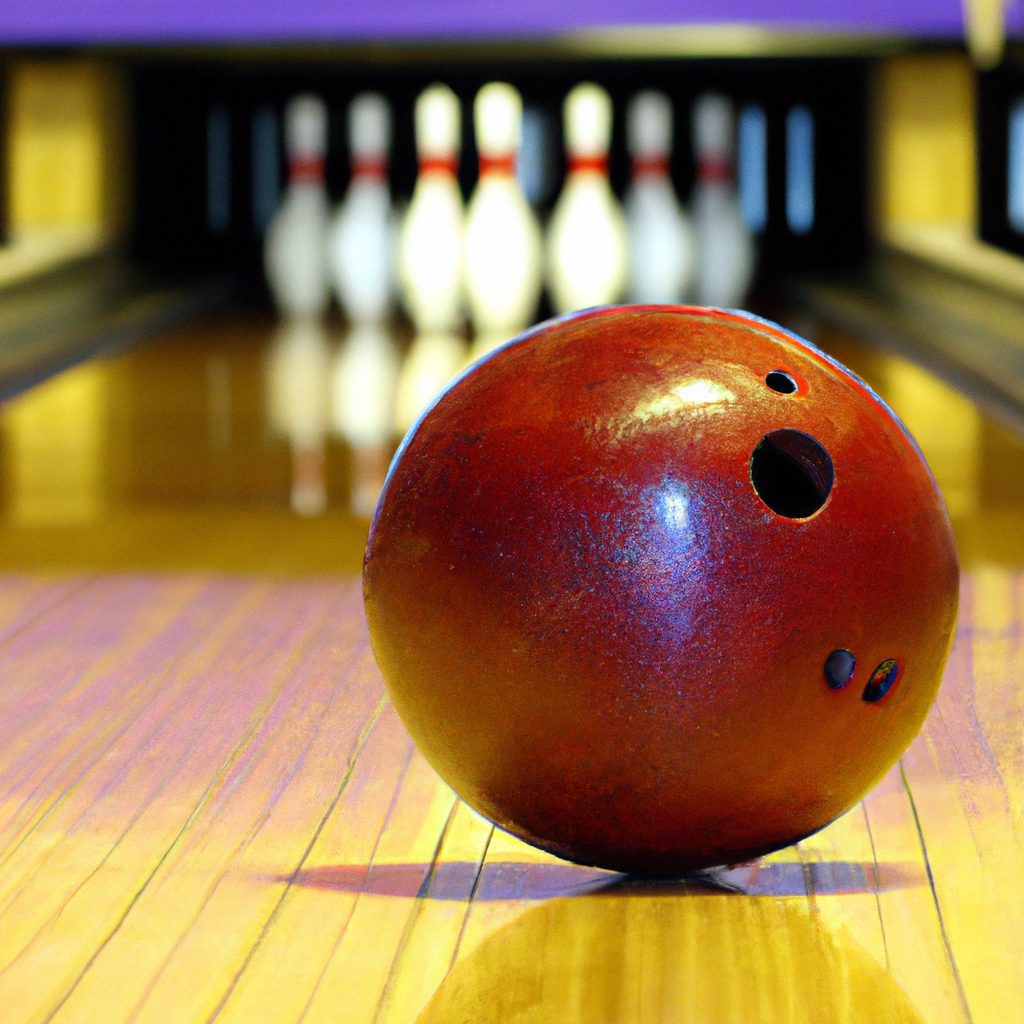In the exciting sport of bowling, one might wonder: how many frames are in a game? Well, we’re here to help quench your curiosity! Whether you’re a novice or a seasoned pro, understanding the structure of a bowling game is essential. So, let’s prepare to roll and find out how many frames await us on the lanes!
Review contents
Overview of Bowling Frames
Definition of a Bowling Frame
A bowling frame refers to a specific round of play in the bowling game. It consists of two opportunities, or rolls, for a bowler to knock down as many pins as possible. Each frame begins with a set of ten pins and ends when all the pins are knocked down, or the bowler has thrown two rolls. Each frame aims to accumulate as many points as possible by knocking down pins.
Purpose of Bowling Frames
Bowling frames serve several purposes in the game. First and foremost, they provide structure and organization to the gameplay, dividing it into manageable portions. Players can focus on each roll by breaking the game into frames and making strategic decisions accordingly. Additionally, frames allow the scoring system to be applied, enabling players to track their progress and determine a winner. Without frames, bowling would be a continuous and unstructured activity, lacking the competitive and strategic elements that make it a popular sport.
Standard Bowling Game
Frames in a Standard Bowling Game
A standard bowling game consists of ten frames, each offering the chance to accumulate points. The game begins with the first frame and progresses through subsequent frames until the tenth and final frame is completed. Each frame is independent of the others, allowing players to start fresh with every new set of ten pins. The structure of the frames creates a logical progression of play, ensuring a fair and comprehensive game.
Number of Rolls per Frame
In a standard bowling game, each frame provides the bowler two rolls. The player can roll the bowling ball twice to knock down as many pins as possible. After the first roll, any remaining pins are reset, and the player takes their second roll. The cumulative score of the two rolls is used to calculate the score for that frame. However, if all ten pins are knocked down with the first roll (a strike), the frame is considered complete, and no second roll is required.
Total Number of Frames in a Game
As mentioned earlier, a standard bowling game comprises ten frames. Each bowler occupies one lane and plays a complete game consisting of these ten frames. Once the tenth frame is completed, the game concludes, and the final scores are tallied. This structure allows players to experience the excitement and challenges of the entire game, where the outcome can change dramatically from frame to frame.
Scoring in a Bowling Game
Scoring System in Bowling
Bowling employs a unique scoring system that rewards precision and consistency. The scoring system accounts for both individual frames and the cumulative score of the game. Each frame is worth ten points based on the number of down pins. There are different ways to earn points within a frame, depending on the outcome of the rolls. Strikes, spares, and open frames each contribute to the final score.
Calculating the Score for Each Frame
The cumulative score is determined by adding the number of pins knocked down in each frame to calculate the score for each frame. If a strike (all ten pins knocked down in the first roll) is achieved, bonus points are added from the following two rolls. Bonus points are added from the next roll if a spare (knocking down all ten pins in two rolls) is achieved. Open frames, where not all ten pins are knocked down in two rolls, earn points based on the total number of pins knocked down.
Extra Frames
Introduction to Extra Frames
Though a standard bowling game consists of ten frames, there are instances where extra frames may be needed. These additional frames are known as “extra frames, ” extending the game beyond the usual ten frames. Extra frames are required in certain circumstances to determine a winner or resolve a tie, making them an integral part of bowling.
When Extra Frames May Be Needed
Extra frames may be needed in a few specific scenarios. One instance is when a tie occurs at the end of a game. One or more extra frames are played in this situation until a clear winner emerges. Another instance where extra frames come into play is during tournament matches or league playoffs. These games often have specific rules that dictate using additional frames to break ties, determine rankings, or eliminate players.
How Extra Frames Affect Game Length
The inclusion of extra frames naturally extends the length of a bowling game. While most games conclude after the tenth frame’s completion, adding extra frames prolongs the duration of play. The number of extra frames required varies depending on the specific circumstances. Bowlers must be aware of this possibility, especially in tournament settings, where time management and stamina become critical factors.
Different Types of Bowling Games
Variations in Bowling Game Formats
Bowling offers various game formats and adaptations that add diversity and excitement to the sport. These variations often influence the number of frames and rules governing gameplay. Some popular formats include traditional ten-pin, nine-pin, candlepin, duckpin, and five-pin bowling. Each format has its unique characteristics, challenging players in different ways and requiring adjustments to strategy and technique.
Frames in Other Formats
While the standard ten-pin bowling game comprises ten frames, other formats may deviate from this structure. For example, some variations, such as nine-pin bowling and candlepin bowling, are played with nine pins instead of ten. As a result, the overall number of frames in these games may differ. However, the fundamental concept of frames remains consistent across various formats, providing a framework for scoring and game progression.
Different Number of Frames for Different Games
Different bowling games can have a varying number of frames. Some formats, like traditional ten-pin bowling, typically stick to ten frames. However, other game formats may alter the number of frames to create a unique playing experience. For instance, variations such as speed bowling or challenge matches might include only a set number of frames, allowing for a quicker game with intensified competition. These alterations showcase the versatility of bowling as a sport and cater to different player preferences.
Strategies for Managing Frames
Importance of Frame Management
Effective frame management is crucial for success in bowling. Each frame presents a scoring opportunity, and it is essential to approach them strategically. By managing frames well, players can optimize their chances of accumulating points and achieving their desired outcome. Frame management involves analyzing the current situation, adapting strategies, and making informed decisions to make the most out of each frame.
Tips for Optimizing Frame Progression
To optimize frame progression, bowlers can employ various strategies. One practical approach focuses on consistency and accuracy, aiming for spares rather than striving for strikes. Consistent spare conversions help maintain a steady flow of points throughout the game. Additionally, being mindful of positioning on the lane, adjusting to lane conditions, and keeping a positive mindset are all critical elements in maximizing performance in each frame.
Potential Challenges with Frames
Common Mistakes in Counting Frames
Counting frames accurately can be a challenge for both novice and experienced bowlers. It is easy to lose track of the frames and make mistakes while scoring. One common mistake is skipping or counting frames twice, leading to an inaccurate score. These errors can adversely affect the game’s outcome, creating confusion and frustration. Therefore, developing good habits regarding frame counting and scoring is crucial.
Addressing Frame Counting Pitfalls
To avoid pitfalls in counting frames, bowlers can adopt several techniques. One method is to use a scorecard or scoring app to keep track of the frames and calculate the scores accurately. Another approach is communicating with fellow players, ensuring everyone is on the same page regarding the frame count. Practicing mindfulness and concentration during gameplay also helps to remain aware of the current frame and stay focused on the task.
Historical Evolution of Bowling Frames
Origins and Evolution of Bowling
Bowling has a rich history that traces its roots back to ancient civilizations. The sport has evolved, adapting to different cultures and changing circumstances. From its origins in ancient Egypt and Rome to its popularity in Europe during the Middle Ages, bowling has transcended centuries and continents. As the game spread, frames emerged to structure and standardize play, introducing an organized system to the evolving sport.
Changes in Frame Structure Over Time
The structure and rules of bowling frames have undergone some changes throughout history. In the sport’s early days, bowling games consisted of a set number of pins (often nine), with players aiming to reach a specific target score. As time passed, the game evolved into the ten-pin bowling we know today, with frames replacing the previous scoring systems. The modern frame structure allows for a more intricate and strategic approach to the game, enhancing the competitive aspect and fostering skill development among players.
Understanding Bowling Terminology
Key Bowling Terminology
To fully grasp the concept of frames in bowling, it is essential to be familiar with the bowling terminology. Some frame-related terms include “strike,” which occurs when all ten pins are knocked down with the first roll, and “spare,” achieved by knocking down all ten pins within two rolls. Other terms include “open frame,” referring to a frame in which not all pins are knocked down, and “split,” which refers to a challenging pin configuration.
Frames about Other Bowling Terms
In the broader context of bowling, frames are interconnected with various other terms. These terms include the “lane,” where the game is played; “pins,” the objects bowlers aim to knock down; and “scoring,” which involves calculating points for each frame. Understanding the relationship between frames and other bowling terminology enhances comprehension of the sport, enabling individuals to enjoy and participate in the game more effectively.
Summary and Conclusion
Bowling frames are the building blocks of a bowling game, providing structure and order to gameplay. Ten frames are played in a standard ten-pin bowling game, with two rolls per frame, allowing bowlers to accumulate points. Extra frames may be required in specific situations to determine a winner or break a tie. Scoring in bowling relies on a unique system that accounts for the outcomes of the rolls within each frame. Effective frame management and accurate frame counting contribute to success in the game while understanding the historical evolution and terminology of bowling frames enhances the overall understanding and enjoyment of the sport. Whether playing for leisure or competing professionally, embracing the concept of bowling frames is essential for any aspiring bowler.





![Spare bowling ball Top 10 in 2024. (reviews) Top 10 Best Spare Bowling Balls [2021 Reviewed]](http://landofbowling.com/wp-content/uploads/2021/07/Top-10-Best-Spare-Bowling-Balls-2021-Reviewed.jpg)























